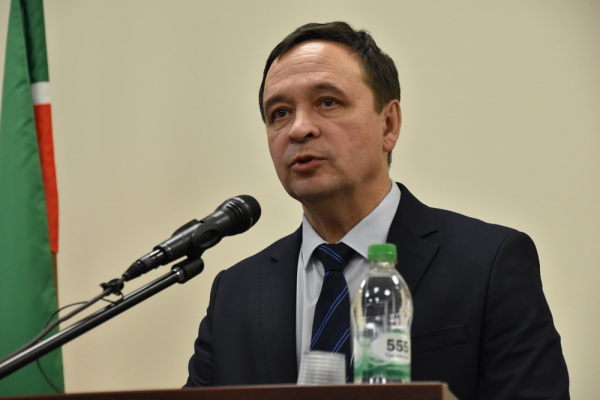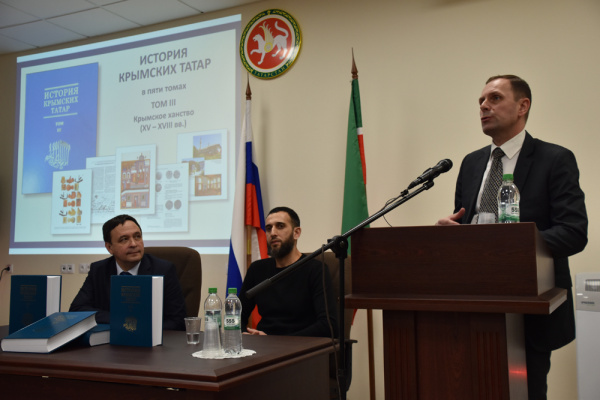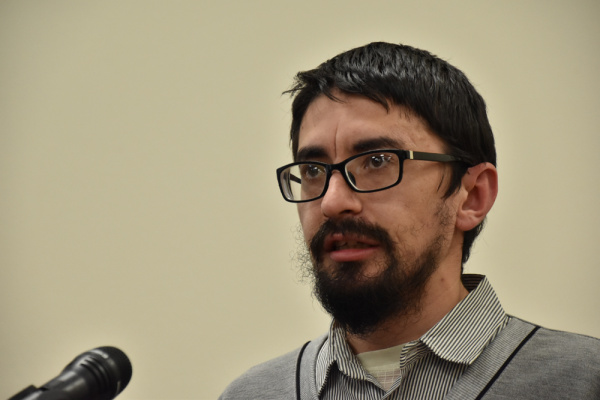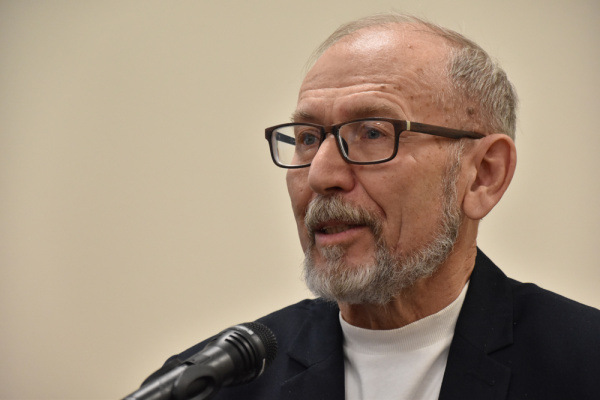The Crimean Khanate, a state on the Crimean Peninsula, actually turned European history upside down over nearly four centuries of existence. The borders of the Crimean Khanate in the period of its highest power (mid-XV century) included the territory of the Northern Black Sea region from the mouth of the Dniester River in the west and to the right bank of the Don River in the east to the Vorskla River in the north. The lands of the Crimean Khanate were inhabited by Tatars, Greeks, Armenians, Karaites and Krymchaks; in port towns also by Italian merchants.
Despite the huge role of the Crimean Khanate in the history of Eastern Europe and the Russian state, until now there was no work that would tell about the Khanate and provide different points of view on certain events. In this regard, historians and researchers from different Russian regions and foreign countries under the leadership of the Sh. Marjani Institute of History of the Academy of Sciences of the Republic of Tatarstan and together with the Crimean Scientific Centre established on the basis of the Institute decided to publish a multi-volume history of the Crimean Tatars.
The first and third volume of the Crimean Khanate was presented in Kazan on 10 February. The volume is dedicated to the history of the Crimean Khanate. Basing on the complex analysis of written, archaeological, cartographic and picture sources the team of the authors made an attempt of the objective reconstruction of the main stages of the Crimean Tatars’ history of the XV-XVIII centuries – the epoch of the Crimean Khanate. Among the authors of the publication there are the most famous experts in various aspects of the history of the Crimean Khanate, representing major academic institutions both of Russia and foreign countries, including Belarus, Romania, the USA, Turkey and Ukraine.
According to Radik Salikhov, the Director of the Sh. Marjani Institute of History of the Academy of Sciences of the Republic of Tatarstan, the work on the volume began back in 2014, when the Crimean Scientific Centre was established at the Institute.

‘It was at that time, under the leadership of Rafael Khakimov, that a program of research work by the Centre was developed, the quintessence of which was to become a multi-volume history of the Crimean Tatars. Of course, this is not an easy job. Beforehand, we had held a number of scientific conferences attended by leading scientists of our country, foreign researchers, and jointly developed the concept of the volume. The next volumes require detailed scientific elaboration,’ Salikhov noted during the presentation of the volume.
According to the Director of the Institute, the release of one of the five volumes of the Crimean Tatars’ history was the result of huge organizational scientific work. ‘In fact, we are witnessing how a professional historiography of the peoples is appearing before our eyes,’ Radik Salikhov stressed.
In his turn, Ilya Zaytsev, Professor of the Russian Academy of Sciences, Deputy Director General of the State Museum of Art of the Peoples of Russia and responsible editor and compiler of the volume, noted that the epoch of the Crimean Khanate was not just a key one for the history of the Crimean Tatars, but the main one.

‘This is the epoch when the foundations were laid for the ethnogenesis of a people, language, culture, art and architecture – virtually everything that makes a people a people. The memory of this period, along with religion and language, is a key moment, including for modern history. That is why the third volume is not just central, but also main in its semantic load. The further work will be easier from here, because the team has certain experience in reconciling different points of view and texts,’ Zaytsev explained.
It is noteworthy that the authors tried to present all points of view in the volume rather than reduce them to a single commonality. Thus, all opinions were taken into account and authors from different countries and Russian regions were given the opportunity to present their vision of the development of the Crimean Khanate from its beginning to the moment when the Crimean Peninsula became a part of the Russian Empire.
‘The Crimean Khanate was a powerful state, which played a huge role in the history of Eastern Europe and the entire old world. It was a polyphonic state, where representatives of different peoples, cultures, religions and languages lived. This fundamental Crimean polyphony, which we can still observe today, is extremely important for the Middle Ages. If we turn our attention to the composition of the volume itself, we will find out that a significant amount of material places emphasis on culture, whether it is music, architecture, written sources, literature, education or others. It seems to us that the Crimean Khanate, which was long deprived of such close attention in historiography, deserves this. I hope that our modest work will change the situation around one of the most significant states, destroy the myths, and the Crimean Khanate will be perceived differently, as a developed state, not parasitic, but having the highest level of culture and all the social institutions, where different spheres were developed,’ the responsible editor of the Crimean Khanate volume concluded.
A total of 48 authors contributed to the volume. According to Eldar Seydametov, Head of the Crimean Scientific Centre of the Sh. Marjani Institute of History of the Academy of Sciences of the Republic of Tatarstan, the volume consists of 1024 pages, 844 of which are text. There are also 68 illustrations, 9 of which are original maps for various periods of the Crimean Tatars’ history in the Khan’s time.

‘We have gained certain experience. Now we have the task of writing volumes 1, 2, 4 and 5. The first volume will cover the period from the III to XIII century, the second one – the Golden Horde period (XIII – XV centuries), the forth one – the Tsarist period, and the fifth one – the history from the XX to the XXI century,’ Seydametov explained.
Grigory Kondratyuk, a leading researcher at the Crimean Scientific Centre of the Sh. Marjani Institute of History of the Academy of Sciences of the Republic of Tatarstan, is convinced that the publication of this volume will give a strong impetus for further work.

‘One of the difficult historical periods to describe will be the history of the XX century. For the Crimean Tatars the XX century is the Civil War, complicated peripeteia of the interwar period, events of the Great Patriotic War, the tragedy of deportation in 1944 and the fate of the people-exiles, and the struggle for the return to their homeland. For the whole range of the aforementioned problems there are no firmly established points of view in the national historiography, there is no fully written work, where the events would be seen from the standpoint of the Crimean Tatar movement. The tragedy of deportation is also a complicated subject, since there is no unified view even on how many people were deported and how many died during the deportation,’ the expert explained.
Amet-Khan Sheikhumerov, a member of the Crimean Scientific Centre, also noted that, unfortunately, for a long time Crimea had been on the margins of history. This is why it is so essential that the first volume of the history of the Crimean Tatars has been published.

‘It is vital that such a monumental work has been published with the active participation of Crimean historians. This is a vivid example of the active involvement of Crimean Tatars in their own history. Thus, we are witnessing the fact that the history of the Crimean Khanate is returning to Crimea. Now Crimea is one of the centres for the study of the Crimean Khanate, albeit with a delay,’ Sheikhumerov highlighted.
It is the volume ‘The Crimean Khanate’, which contains many essays on culture that provides a clear picture of Tatar medieval civilization. This was stated by historian Damir Iskhakov.

We would like to remind that a total of 5 volumes will be prepared and published. The ‘Crimean Khanate’ third volume reflects unbiased view on the history of the medieval Crimean Tatar state, the perspective directions of further researches of this epoch of the Crimean Tatars’ history are outlined to be done in the future.
The edition contains data on political, social and economic and cultural history of the Crimean Khanate. In addition to it, such aspects as foreign policy of the state, its military structure, system of government, legal aspects, art, architecture, handicraft and agriculture, science, education and many others are considered in the edition. The publication will be of interest both to professionals (historians, archaeologists, art historians) and all those interested in the history of the Crimean Tatars and the Crimean Khanate.
